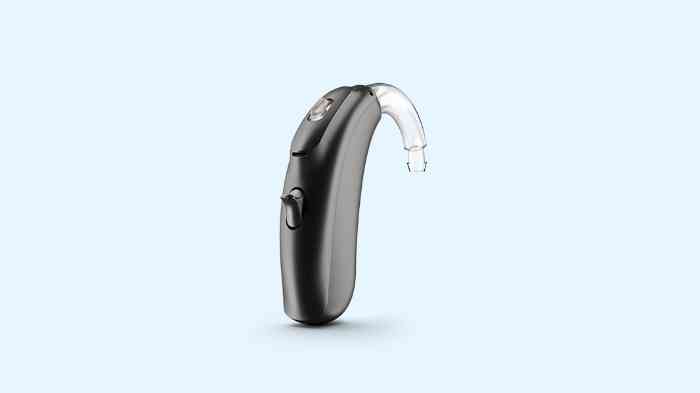
Cookie bite hearing loss
Among the various types of hearing loss, cookie bite hearing loss stands out for its distinct U-shaped audiogram pattern, its rarity, and its tendency to go unnoticed in early stages.
What is cookie bite hearing loss?
Cookie bite hearing loss, also known as mid-frequency sensorineural hearing loss (MFSNHL), is a rare type of hearing impairment characterized by difficulty in hearing sounds in the mid-frequency range — typically between 500 and 2,000 Hz. The condition gets its name from the distinctive U-shape it forms on an audiogram, resembling a bite taken out of a cookie.
Is cookie bite hearing loss a disability?
Yes, cookie bite hearing loss can be considered a disability, but it depends on the severity and how much it impacts daily life and work. This type of hearing loss affects the mid-frequency range — crucial for understanding speech — while low and high frequencies often remain intact. Under the Americans with Disabilities Act (ADA) and similar frameworks, it may qualify as a disability if it significantly impairs communication or the ability to perform essential job functions. However, qualifying for disability benefits, such as those from the U.S. Social Security Administration (SSA), typically requires more profound or bilateral hearing loss, often with supporting audiometric evidence. In milder cases, cookie bite hearing loss might not meet the threshold for legal disability status, but it can still present real challenges in social and professional environments.
1%
Cookie bite hearing loss is relatively rare, affecting only 1% of all hearing loss.
Symptoms and signs of cookie bite hearing loss
Unlike more common forms of hearing loss that affect high or low frequencies, cookie bite hearing loss often leaves those ranges intact. However, it often affects the clarity of voices, especially in noisy environments. Here are the most common symptoms:
- Difficulty understanding speech
- Frequently asking others to repeat themselves
- Turning up the volume on the TV, phone, or radio
- Struggling to hear in noisy environments
- Relying on lip-reading or facial expressions
- Missing parts of music or environmental sounds
- Needing subtitles


Cookie bite hearing loss: causes
Genetic factors
Age-related
Noise exposure
Medical conditions
Is cookie bite hearing loss progressive?
Cookie bite hearing loss can be progressive, but the rate and extent of progression vary significantly from person to person. In many cases, especially when the condition is genetically inherited, the hearing loss may begin subtly and worsen gradually over time, often becoming more noticeable during adolescence or early adulthood. However, for some individuals, the hearing loss may remain relatively stable for years without significant deterioration.
Treatments to reverse cookie bite hearing loss
Hearing aids
Cochlear implant
Assistive listening devices (ALDs)
Auditory training
Environmental modifications


Health concerns related to cookie bite
Dementia
Tinnitus
Dizziness
Diagnosis of cookie bite hearing loss
Cookie bite hearing loss simulator
Best type of hearing aids for cookie bite
For individuals with cookie bite hearing loss, selecting the right type of hearing aid is crucial because this condition affects mid-frequency sounds, which are essential for understanding speech and enjoying music. Here are the best types of hearing aids for this specific hearing profile:



Receiver-in-canal (RIC)
RIC hearing aids are versatile and offer excellent sound quality. For cookie bite hearing loss, it's recommended to use a custom earmold instead of standard domes to better retain mid-frequency amplification and prevent sound leakage.
In-the-ear (ITE)
These are custom-molded to fit within the outer ear and are effective for mild to moderate cookie bite hearing loss. They help seal the ear canal, which is important for retaining mid-frequency sounds and preventing feedback.
Completely-in- canal (CIC/ICC)
CIC and ICC hearing aids are very discreet and fit deep inside the ear canal. They are suitable for people who want a nearly invisible option. They can be effective if the hearing loss is not too severe and if the user prefers a more cosmetic solution.
Features like adaptive directional microphones, noise reduction, and speech enhancement are especially valuable for people with this type of hearing loss, helping them understand speech more clearly in noisy environments. Modern hearing aids from brands like Phonak, Eargo, and Oticon often include these features, along with Bluetooth connectivity for seamless audio streaming.
Living with cookie bite hearing loss
Living with cookie bite hearing loss presents unique challenges, especially because it affects the mid-frequency range — where most speech and music sounds occur. People with this condition often struggle to understand conversations, particularly in noisy environments, even if their hearing in low and high frequencies remains normal. Many individuals report frustration with standard hearing aids, which may amplify unwanted sounds while still failing to clarify speech. Emotional impacts are also common, including feelings of isolation or being misunderstood, especially when others assume the hearing loss is minor due to its rarity. However, with the right support — such as customized hearing aids — and regular audiologist visits, many people adapt successfully and lead fulfilling lives.
With you on your journey to better hearing.
It's time to finally treat your hearing loss. Sign up for a free consultation with a licensed hearing care professional today to determine if you have hearing loss. It’s the start of your journey towards better hearing.
EarPros benefits:
- It's 100% risk free
- Best partner with more than 1.000 stores
